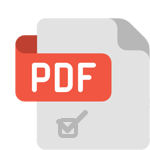Role of E-Learning Readiness on Workload: Perspective Engineering and Non-Engineering Students
DOI:
https://doi.org/10.25124/ijies.v6i01.165Keywords:
Online learning; E-learning readiness; Workload; Engineering and Nonengineering; Self-Directed LearningAbstract
Changes in learning methods from face-to-face to online learning due to pandemic covid19 have an impact on student readiness in learning and the mental workload felt by students,
that can determine the achievement of the learning process. There are differences in the
characteristics of learning demands in engineering and non-engineering majors. Therefore,
this study aims to evaluate the level of readiness and mental workload of students during
the implementing full online learning based on the characteristics of the education
department. Data collected by distributing online questionnaires to 180 students (90
students majoring in engineering and 90 students in non-engineering). Self-directed
learning (SDL), technical readiness (TC), and comfort with non-face to face communication
(CFT) used to measure e-learning readiness, meanwhile NASA TLX used to measure
mental workload. Results showed differences between engineering and non-engineering
students, especially in the Self-Directed Learning (p < 0,05). Non-engineering students
perceived that they are more prepared to manage their learning process independently
during online learning. Related to mental workload students perceive higher demands from
online learning activities, the engineering group had higher level of time-related demands.
According to correlation testing there was a negative and significant correlation between
the self-directed learning dimension scores of E-Learning Readiness and the NASA TLX
scores (p < 0,05). These results indicated the role of student’s e-learning readiness,
especially self-directed learning readiness can reduce perceptions related to the mental
workload experienced by engineering students in online learning. This condition was not
applied on non-engineering students. Future study needed to explore the characteristics of
study programs that relate to both variables and if the condition applied on other learning
conditions such as hybrid learning.











